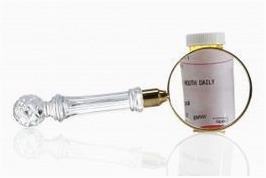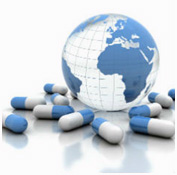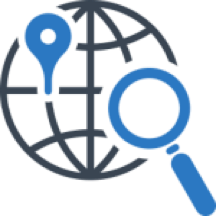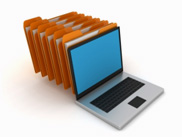 A large number of people at the moment are taking a medication. Each time the medicine is taken a certain risk of side effects is present, but at the same time with each medicine taken our knowledge of its effectiveness and safety is further complemented.
A large number of people at the moment are taking a medication. Each time the medicine is taken a certain risk of side effects is present, but at the same time with each medicine taken our knowledge of its effectiveness and safety is further complemented.
It is known that the safety information collected during clinical trials do not provide sufficient data on rare, and especially not on a very rare side effects of the medicine that occur in less than 1 in 10,000 patients taking the medicine, which means that at least 30,000-60,000 patients should be exposed to the same, in order to observe such a very rare side effect. There are very few medicines that have been tested on so many patients before they were marketed and therefore the continuous collection of side effects and safety monitoring of medicines during their practical application remains of utmost importance for patient safety and for their successful treatment.
Timely detection, assessment and understanding of the side effects or unwanted side effects of medicines, is crucial for appropriate treatment in the event of their occurrence, but it also allows us to take a whole range of measures, whose compliance can largely prevent their formation, which is the main objective of pharmacovigilance as a discipline that by collection, assessment, identifying and minimizing risks continuously strives to ensure that the benefit outweighs the potential risks of medicinal products.
Thus, we can conclude that the ultimate purpose of pharmacovigilance is to ensure the availability of safe and effective medicines which greatly contribute to the improvement of public health.
Given its importance, each and single serious pharmaceutical company aims to establish a good and effective pharmacovigilance system without which it is very difficult to maintain the continuity of its medications on the market. However, as pharmacovigilance by its nature is more demanding than other disciplines, given its multidisciplinary nature and extreme dynamism, very often it is not easy, especially for smaller pharmaceutical companies, to build and maintain such a high quality and efficient pharmacovigilance system.
With its skilled and experienced team Bonifarm provides its clients with just such a quality and functional pharmacovigilance system. Our services can be individual, as support to the central office holder of the authorization to the organization of a complete pharmacovigilance system of individual holders.
skilled and experienced team Bonifarm provides its clients with just such a quality and functional pharmacovigilance system. Our services can be individual, as support to the central office holder of the authorization to the organization of a complete pharmacovigilance system of individual holders.
PHARMACOVIGILANCE SERVICES
 Pharmacovigilance services at the global level
Pharmacovigilance services at the global level
- Organization services and maintenance of a comprehensive pharmacovigilance system,
-
- Services of qualified person responsible for pharmacovigilance at the global level (EU QPPV),
- Internal inspection (audit) of the pharmacovigilance system,
- Development of the plan of implementation of the pharmacovigilance system,
- Development of SOP related to pharmacovigilance,
- Training of personnel involved in the pharmacovigilance system,
- The collection and compilation of information on all suspected adverse reactions to medicines of the authorization holder
- Collection and integration of other security information relevant to the safety profile of medicines authorization holder (overdose without visible symptoms, errors in the treatment including errors in the issuance of a medicine, inadvertent exposing to the medicine and misapplication, use outside the approved indications, abuse, inefficiency, merciful giving, occupational exposure, exposure in pregnancy and pregnancy outcome including the outcome of no consequence, the use of the medicine in the paediatric population, important pre-clinical tests),
- Search of expert literature indexed in databases Medline and Embase,
- Signal detection and evaluation of risk for a particular medicine,
- Processing of side effects reports, preparation of Electronic Individual Case Safety Reporting (ICSR) in terms of making narratives, coding in MedDRA and expert medical assessment of the case, the application of ICSRs to the regulatory authorities through the EudraVigilance system,
- Preparation and delivery of reports on Emerging Safety Issue,
- Preparation and centralized submition of Periodic Safety Update Reports (PSURs) and the Risk Management Plan (RMP) to the regulatory bodies,
- the registration of medicines in XEVMPD and their update them,
- participation in the process of user complaints processing and the process of recall of the medicine in terms of identifying the side effects and safety issues at the local level,
- communication with relevant local regulatory authorities,
- systematic storage of documents related to pharmacovigilance activities, and
- development and maintenance of the Pharmacovigilance system master file (PSMF).
- Individual services in terms of support to the existing operating pharmacovigilance system which applies to any service or combination of services listed in the list of services provided within the organization and implementation of a comprehensive pharmacovigilance system globally.
Pharmacovigilance services at the local level
- Organization services and implementation of the local Pharmacovigilance System,
-
- Services of qualified local persons responsible for pharmacovigilance in accordance with local regulations
- The organization and implementation of the pharmacovigilance system in accordance with SOP related to pharmacovigilance at the global level
- Training of personnel involved in the pharmacovigilance system
- Gathering information about all suspected adverse reactions to medicines of the authorization holder that originate from the local territory,
- Collection and integration of other security information relevant to the safety profile of medicines authorization holder (overdose without visible symptoms, errors in the treatment including errors in the issuance of a medicine, inadvertent exposing to the medicine and misapplication, use outside the approved indications, abuse, inefficiency, merciful giving, occupational exposure , exposure in pregnancy and pregnancy outcome including the outcome of no consequence, the use of the medicine in the paediatric population, important pre-clinical tests) that originate from the local territory,
- Search of local literature that is not indexed in databases Medline and Embase,
- Login of ICSR to local regulatory authorities through the EudraVigilance system
- processing and delivery of Periodic Safety Update Reports (PSURs) and the Risk Management Plan (RMP) to local regulatory authorities,
- participation in the process of user complaints processing and the process of recall of the medicine in terms of identifying the side effects and safety issues at the local level,
- communication with relevant local regulatory authorities,
- systematic storage of documents related to pharmacovigilance activities, and
- participation in internal inspections of the pharmacovigilance system.
- Individual services in terms of support to the existing operating system of the local pharmacovigilance system which applies to any service or combination of services listed in the list of services provided within the organization and implementation of the pharmacovigilance system at the local level.



 A large number of people at the moment are taking a medication. Each time the medicine is taken a certain risk of side effects is present, but at the same time with each medicine taken our knowledge of its effectiveness and safety is further complemented.
A large number of people at the moment are taking a medication. Each time the medicine is taken a certain risk of side effects is present, but at the same time with each medicine taken our knowledge of its effectiveness and safety is further complemented. skilled and experienced team Bonifarm provides its clients with just such a quality and functional pharmacovigilance system. Our services can be individual, as support to the central office holder of the authorization to the organization of a complete pharmacovigilance system of individual holders.
skilled and experienced team Bonifarm provides its clients with just such a quality and functional pharmacovigilance system. Our services can be individual, as support to the central office holder of the authorization to the organization of a complete pharmacovigilance system of individual holders.

 Professional team of BONIFARM bases its expertise in regulatory affairs on long experience in the development, preparation and harmonization of comprehensive documentation required for registration of medicines, medical products, food supplements and cosmetic products in accordance with Croatian and European legislation.
Professional team of BONIFARM bases its expertise in regulatory affairs on long experience in the development, preparation and harmonization of comprehensive documentation required for registration of medicines, medical products, food supplements and cosmetic products in accordance with Croatian and European legislation.